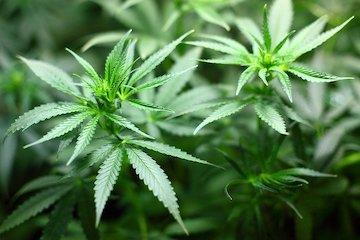
Eleven states have already legalized marijuana. Thirty three states allow its use in some form. Many others, including Pennsylvania, are looking at doing so in the future. The reasons for this include perceived preferences of the voting public as well as the potential for significant tax revenues for individual state coffers.
Legalization of this drug will likely be coming up for your vote due to pressure from the public at large or our elected officials. It is my firm belief that, if the facts are on the table, you will be able to make a better, more-informed decision on the topic.
I have a number of patients that are using medical marijuana for chronic pain management. I have referred a number of them to facilities for this form of pain management therapy. However, instead of focusing on the application of this drug for the purpose of addressing chronic pain, in this series, I will offer my thoughts on the legalization of marijuana for “recreational use.” While, I have come to conclusions of my own regarding the medical, social, and monetary consequences of legalization of marijuana, I will let the reader arrive at his or her own decisions and conclusions regarding legalization of this drug.
Much of the information that I will be sharing was first printed by investigative reporter Alex Berenson. Mr. Berenson graduated from Yale University with degrees in history and economics. He was an investigative journalist for the New York Times for more than 10 years. He has published a number of books on a variety of topics. You can find them at these links: “The Number: How the Drive for Quarterly Earnings Corrupted Wall Street and Corporate America” and Tell Your Children: The Truth About Marijuana, Mental Illness, and Violence.” I have reviewed much of the research on the subject and concur with Mr. Berenson's findings.
I know that much of what I will share with you will cause controversy and perhaps even some strongly worded responses from readers. That is all right on my end, since I have developed some pretty thick skin over the years. I simply wish to bring some clarity and factual information to the table regarding this controversial topic.
BIG MONEY
I expect that it is apparent to all that there is big money in “weed.” That is why many investors as well as many politicians such as John Boehner, retired Congressman and past Speaker of the House, have invested heavily in farms and facilities for the production of marijuana. Keeping that in mind, over the last 30 years, the concerns that many epidemiologists and psychiatrists have had regarding the dangers of marijuana have been born out through scientific studies. At the same time, a very strong and well-financed lobbying campaign has broken down the public morays regarding the drug.
BIG CONCERNS
THC, the active ingredient in marijuana had been purported to have many medicinal uses, however it has only been proven to have a positive effect on only a limited number of conditions. In spite of the fact that I have referred patients for the drug due to their intractable pain syndromes, I must bear in mind as we consider widespread use of the drug the scientific facts.
One Australian study followed patients with chronic pain over a four-year period. It found that cannabis use was associated with more pain over time.
The National Academy of Medicine, after an extensive review of available research and data, concluded in 2017 that “cannabis use is likely to increase that risk of developing schizophrenia and other psychoses, the higher the use, the greater the risk.”
The United States has a greater rate of use of cannabis than any other western country. Concurrently we also claim the worst problem with opioids. The research relative to individual users of cannabis demonstrates that marijuana use leads to other drug use. The American Journal of Psychiatry noted in 2001 that individuals who used cannabis were nearly three times as likely to use opiates three years later. This statistic was adjusted for other potential risk factors.
Peer reviewed research in numerous medical journals demonstrates that marijuana can either cause or worsen severe mental illness, especially psychosis according to Mr. Berenson’s research. It was also demonstrated that teenagers who were regular users of marijuana were about three times more likely to develop schizophrenia.
It was further demonstrated that regular users of cannabis had an increased risk of developing social anxiety disorder.
COMING UP...
Next week I will discuss the rate of use of marijuana in the United States and the quality as well as the THC content of the drugs that are used by most.
